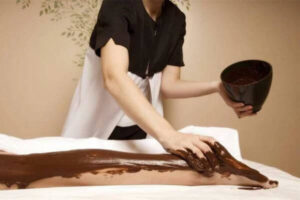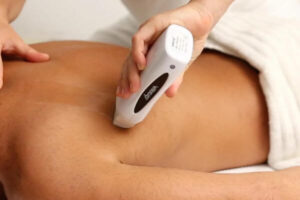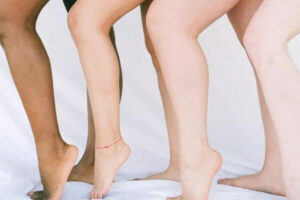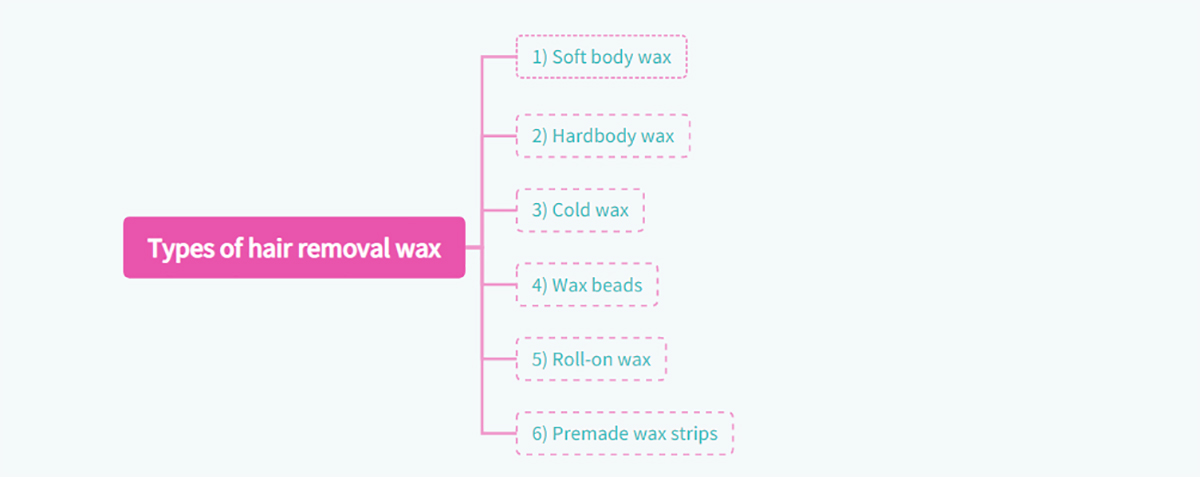Body waxing is known to be one of the most effective options for removing unwanted body hair. Even in cases where one is not familiar with all the options at hand, a professional wax can win over a client on the first try. This happens because waxing products come in many forms that better suit a person’s needs. While most professional waxes have important advantages over regular hair removal products, you still need to know which formula is right for the type of skin you want to wax. Other factors also come into play, such as the total length of treatment and the client’s pain tolerance. We’ll go over all the options available to help you determine your waxing needs.
1. What is hair removal wax
Waxing is the process of hair removal, the process of hair removal from the root by using a covering of a sticky substance, such as wax, to adhere to body hair, and then removing this covering and pulling out the hair from the follicle.
2. What is the benefit of hair removal wax?
Waxing has many benefits over other methods of hair removal. Here are some of its benefits.
- Smooth, even-toned skin. One of the biggest benefits of hair removal is that your skin will feel smooth and even-toned. When your hair is removed, you not only remove unwanted hair, but you also remove dry and dead skin cells.
- No Cuts. With waxing, you don’t run the risk of cuts or nicks from shaving, nor do you get scars.
- Skin without beard stubble. Waxing completely removes unwanted hair at the root. Shaving, on the other hand, usually leaves stubble behind, which can feel rough and irritating.
- No irritation, no allergy. Only very small amounts of chemicals are used in the waxing process, so waxing rarely causes skin irritation or allergies.
- Hair regrowth is slow. After hair removal, hair regrowth is very slow, usually taking 4 to 6 weeks. In addition, many people report that the hair becomes finer after regrowth.
- Long-lasting method, waxing is a long-lasting method of hair removal. Because the hair in the waxed area will not grow back for two to eight weeks. When hair is removed with shaving creams or depilatory creams, the hair is removed at the surface, not at the root. Within a few days, the hair will reappear at the surface. With these methods, the hair tends to grow back as coarse, short beards. Areas that are waxed repeatedly over a long period of time will usually have softer regrowth hair. Let us give you smooth, hair-free skin!
3. Why is hair removal wax so popular?
Professional waxes are well-received because, unlike razors, they maintain the natural softness of the skin while allowing more time for hair to start growing back. Some formulas are more expensive than others because they incorporate more unique ingredients, but beeswax and rosin are the main ingredients used to get the desired result: removing hair from the roots. To understand the types of waxes to use for hair removal, it’s important to familiarize yourself with the ingredients of each wax product in your collection. From heavily scented formulas to completely beeswax-free vegan alternatives, there’s a product for just about every need, but body waxes can be categorized in more general terms to give you an idea of the most suitable use a product can serve.
4. Types of hair removal wax
There are some different hair removal wax types.
1) Soft body wax
Soft waxes have several benefits, starting with the ability to cover large sections of skin and smooth them in minutes. The soft wax is applied with a spatula and removed after pressing the muslin strips against the skin, always pulling in the opposite direction of hair growth. They allow many people the freedom to safely treat different types of skin at a fairly affordable price, making them the most distinctive choice in salons and other beauty establishments.
2) Hardbody wax
Hard wax has a thicker consistency when melted, so it can be applied and removed without the aid of a strip. Since hard waxes are used on the most sensitive areas of the skin, you’ll want to perfect your technique before you start using them on your clients. Rich in nourishing ingredients, hard body waxes are attractive from a skincare standpoint, and often have a lower melting point, making waxing more acceptable. What’s more, they don’t stick to the skin, so pain and lingering itching are minimized. Most hard waxes are for small, hard-to-reach areas, but some formulas can be used on large areas.
3) Cold wax
For people with a low pain threshold, cold waxes are a godsend as they completely avoid the risk of burns. Unlike hot waxes, cold waxes do not have to be heated beforehand, which has a double-edged sword: on the one hand, they save time and reduce discomfort during application; on the other hand, they are more expensive, cold waxes are more difficult to handle because they harden quickly and when you try This can be a hassle when it comes to removing all the hair evenly and skin can be pulled without too much effort. It is important to remember that different wax products come in many forms and presentations to suit the needs of different clients. Likewise, some waxing products are specifically developed to reduce the work involved in the waxing process, which provides more options for beginners to familiarize themselves with the process.
4) Wax beads
Typically packaged in jars, wax beads are probably the most common and readily available form of specialty wax products. The wax beads are poured into a furnace and heated until they reach the right consistency to remove hair from the skin. Their heating point changes from one product to another depending on the ingredients and how well they work for sensitive skin.
5) Roll-on wax
A viable alternative to applying soft body wax. Roll-on wax retains all the properties that make soft wax so effective, plus a way to prevent mess and simplify maneuverability during waxing. If you plan to introduce roller wax as a waxing alternative, you’ll also want to invest in a specialized heater applicator to help you heat the cartridge to the optimum temperature.
6) Premade wax strips
Another way to save time is when using cold wax. As the name suggests, these strips already have just the right amount of wax applied to their surface, so you can use them right after you unpack them without stopping to prep the wax. These characteristics are the obvious reason wax strips are only used with cold wax, and are not commonly found in professional services in salons/spas. Now that you know what type of wax to use for hair removal, don’t hesitate to contact us and start learning more about the best wax formulations for your client’s needs.
5. Privacy hair removal wax
Hair removal treatments are great for removing unwanted body hair without harming the skin. This is a valuable attribute, especially when it comes to the most sensitive areas of the body, where the risk of infection is ever-present. Professional Waxes provide this sense of security, along with other benefits, that keep skin soft and glowing for hours after a session.
When it comes to intimate hair removal, two treatments are at the top of most people’s minds. While most of us have heard of Brazilian waxes and Hollywood waxes, it’s so easy to confuse them that many people don’t know the difference. This is due in large part to the variety of options offered by different salons and spas, many of which categorize intimate waxes so clients can choose what they want.
Starting with a standard bikini wax and working your way up to packages that sometimes pair Brazilian and Hollywood waxes with other treatments, all of these options vary depending on the number of body parts a client wants to be waxed in one session and the expected duration of the treatment.
1) What is a Brazilian wax?
A Brazilian wax removes most of the pubic hair and waxes the bikini line, belly button line, and buttocks area. It leaves just a thin strip of hair on the top of the pussy, similar to the inverted triangle of hair a bikini wax leaves after removing all the hair around the thighs.
2) What is Hollywood wax?
Hollywood wax does not leave any hair spots. It removes all pubic hair on the front and thighs, all the way down to the cracked butt. It waxes everything from front to back, so it’s the most thorough choice for intimate areas.
3) Should I go for a Brazilian wax or a Hollywood wax?
At the end of the day, the two treatments are very similar and their differences have more to do with the client’s aesthetic preferences. You may want to start with a standard bikini wax to see how your body responds to the sting before moving on to waxing the rest of your vulva.
Keep in mind that the skin is more sensitive there, and removing pubic hair can make it more susceptible to infection if you ignore it after one session. Post-wax care is always important, but it really is essential to a successful Brazilian/Hollywood wax.
Our experts have worked for decades to bring the best hair removal results, formulating groomers across America. We have products for every preference, and we’ve perfected our waxes to soothe all skin types, So you can always expect the best results from Brazilian and Hollywood waxes.
4) What do privacy waxes have in common?
Both Brazilian waxes and Hollywood waxes fall into the category of intimate hair removal. When waxing these areas for the first time, the skin needs to become accustomed to the wax. For example, waxing your pussy for the first time is more painful than waxing your legs.
Also, some clients may feel uncomfortable if they are not used to the requirements of an intimate wax. For your first waxing session, estheticians do not recommend jumping straight into a Brazilian/Hollywood wax. Clients have to sit/lie down in specific positions for several minutes at a time, and the beautician needs to be in close contact with their private parts to ensure precision and avoid skin damage.
This is why it is so important for an esthetician to create a pleasant environment that is both attractive and organized. In the end, it’s safer to let a professional take care of your intimate areas, since you won’t be able to touch these areas of your body on your own without compromising the accuracy of the wax.
You can trust your beautician to remain professional and put your safety first. Both wax treatments have other things in common, such as pre-wax and post-wax requirements:
- Hair needs to be between 1/4 and 1/2 inch in length before waxing.
- Customers will need to wash and remove the area in advance.
- Clients need to avoid direct sunlight, friction, and physical exertion for 24-48 hours after waxing. Tight clothing, exercise, and sexual contact should be avoided during aftercare.
- Cooling pads and post-wax calming oils rich in natural ingredients can go a long way in soothing post-wax skin.
- Professional waxing services include sanitizing products before and after waxing, but clients should still take care of their skin to avoid infection. At the same time, they should also stop using artificial beauty products.
- Clients should avoid booking wax treatments during menstruation and for a few days after menstruation stops.
What’s more, in all cases, you can expect hair to grow back within three to six weeks. Just like the stinging from your first waxing session will lessen with subsequent waxing sessions, as you continue your waxing sessions, the hair will also take longer to grow back, thinner, and easier to pull out.
6. Conclusion
If you are interested in making our products part of your salon, we would be happy to provide you with more information. For more information about hair removal waxing, contact Auperwel.
How useful was this post?
Click on a star to rate it!
Average rating 5 / 5. Vote count: 1
No votes so far! Be the first to rate this post.









